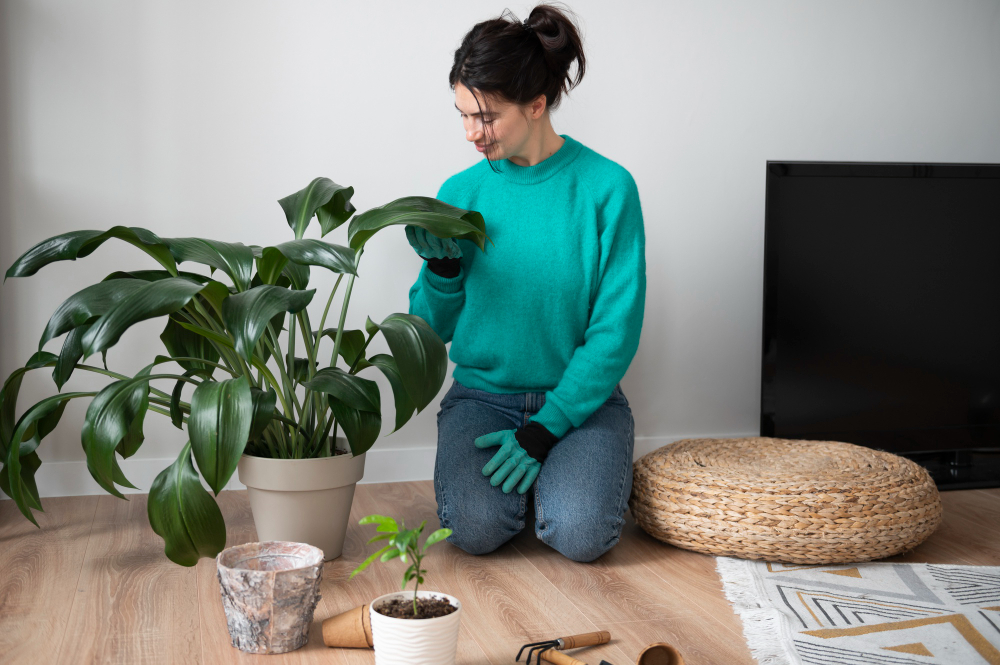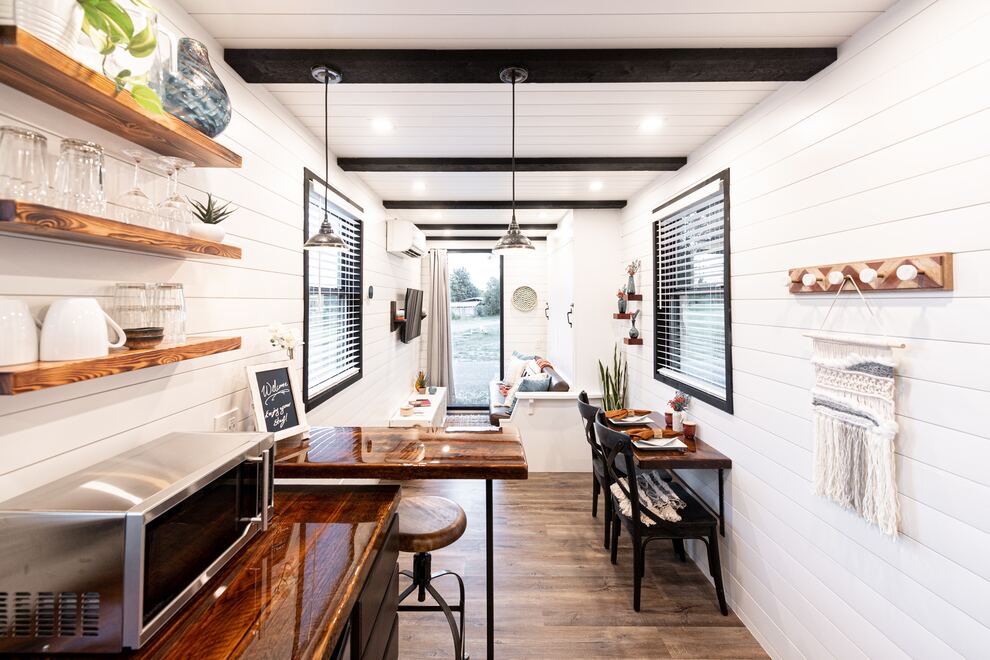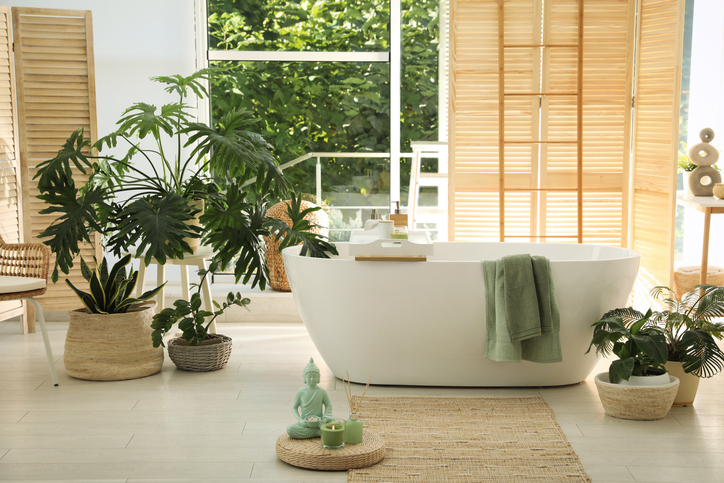Embarking on an Eco-Friendly Home Improvement journey is not merely a trend; it’s a commitment to a sustainable future. As a content creator, I understand our pivotal role in fostering positive change. In this article, we delve into the realm of environmentally conscious home renovations, seeking insights from experts who champion sustainable living. Discover how simple yet impactful changes can transform your home into an Eco-Friendly haven. Join us on this enlightening journey as we explore the intersection of innovation, style, and environmental responsibility.
Amidst the allure of aesthetic upgrades, it’s crucial to recognize the ecological footprint left by traditional renovation practices. From energy-efficient appliances to eco-conscious building materials, every choice can contribute to a greener lifestyle. The experts participating in this article bring a wealth of knowledge, guiding you through sustainable choices that enhance your living space and mitigate environmental impact. Embrace the Eco-Friendly revolution in home improvements and empower yourself to make a difference.
Benefits of Eco-Friendly Home Renovations
Embarking on Eco-Friendly renovations enhances your home’s aesthetic appeal and fosters a myriad of benefits. By opting for sustainable materials and energy-efficient technologies, you contribute to a reduced carbon footprint, promoting environmental well-being. Beyond ecological impact, these renovations often translate into long-term cost savings through lower utility bills. Improved indoor air quality, healthier living spaces, and a positive impact on property value are additional perks. Eco-friendly renovations embody a commitment to responsible living, creating homes that align with contemporary values and stand as beacons of environmental consciousness in a world moving towards a sustainable future.
What Are Some Essential Things to Consider to Make a Zero-Waste Home?
The most essential things you should keep in mind to make a zero-waste home renovation:
- Eco-friendly Materials: While making a zero-waste home, you should always use products that can be easily recycled, reused, or disposed of by nature, such as bamboo, bio-plastic, sustainable fabric, etc.
- Install a Composting System: Build a system that will convert your organic kitchen food waste into nutrient-rich compost. That is used to enrich the soil, which helps plants grow in the garden.
- Use Secondhand Products: While renovating a home, people should find secondhand stores to buy stuff like furniture, appliances, and household goods rather than spending cash on new products.
- Donate or Resell things: Instead of putting any item directly in the trash, consider reselling it through an online medium or donating it to local charities or communities so others can reuse it.
- Insulation Wall: Installing an insulation wall helps to conserve energy and maintain the house’s indoor temperature, which is low in summer and high in winter, which directly allows lower energy consumption for heating and cooling.
-Abhay Gupta | JustEco
What are some practical tips for individuals looking to adopt a zero-waste lifestyle, especially in the context of a home renovation?
Renovating your house in a conventional way is bound to create a lot of waste, but it doesn’t have to. You can start by reusing what you already have by giving it a new look to match your renovations using your DIY skills. Similarly, if you need new furniture, aim to get them second-hand, and you can always repaint or improve them yourself. You’ll be surprised by how easy it is once you get the hang of it. And what you don’t need, you can donate or sell so that someone else can find use for it in their homes. There are many things you can do to reduce unnecessary waste, but the most important thing is to approach it with creative and out-of-the-box thinking.
-Sofia Hadjiosif, Founder | Terra Movement
What are the main benefits of eco-friendly construction for homeowners and the environment?
Eco-friendly construction offers many benefits for homeowners and the environment. For homeowners, it means lower utility bills due to energy-efficient materials and design, which help reduce heating, cooling, and electricity costs. Many eco-friendly buildings use renewable energy sources like solar panels, which can further decrease monthly expenses. Additionally, sustainable homes often have better insulation and air quality, making them more comfortable and healthier for occupants.
For the environment, eco-friendly construction reduces the impact on natural resources by using sustainable materials like bamboo, recycled steel, and reclaimed wood. These materials require less energy to produce and often have a lower carbon footprint. Eco-friendly homes are also designed to minimize waste during construction and to conserve resources, like water, through efficient plumbing and rainwater collection systems.”
-Construction Marketing Association
How can homeowners incorporate energy-efficient practices into their renovation plans?
There is no better time to prioritize efficiency than during the planning phase of your renovation! We recommend considering the sustainability of all products throughout their life cycle, from manufacturing to use and eventual retirement. When sourcing items, choose those ethically manufactured with recycled or efficient materials. Opt for recycled and recyclable materials whenever possible. Select energy-efficient products and appliances for everyday use to promote lower energy consumption. Consider the longevity and style of items; higher quality items will last longer, and a timeless design will stay fresh as trends change. Fixtures from Bicycle Glass are made with 100% recycled glass, are compatible with energy-saving LED bulbs, and are classically designed to fit in with your ever-changing style.
-Katherine Rose | Bicycle Glass Co
How does integrating renewable energy sources, such as solar panels, factor into the renovation process for achieving net-zero energy?
Solar panels will be necessary when renovating to achieve a net zero energy home. You can work backward to determine how much solar power is needed by using the PVwatts program. This tells you how much energy you can generate in your home. Next, get a GreenHome Inspection to know if your roof is in good shape for solar or if you should replace it during the renovation. The inspection produces a DOE Home Energy Score, which will help you determine how to be more energy efficient and get access to Inflation Reduction Act rebates to help. Heat pumps help you electrify, which can then use more solar power to heat and cool your house. Solar power is now worth a tax credit of up to 30%, along with batteries, which will help you continue to have power when the grid is down.
-Brett Little | GreenHomeInstitute
How can homeowners incorporate energy-efficient practices into their renovation plans?
Incorporating energy-efficient practices into home renovations starts with selecting the right materials and appliances. For homeowners, adopting technologies like smart thermostats and energy-efficient air conditioners, such as our medium WhisperTech 8k BTU model, can significantly reduce energy consumption. These devices adjust cooling based on the time of day or room occupancy, ensuring no energy is wasted. Additional steps include using LED lighting, adding proper insulation, and choosing Energy Star rated appliances. Even simple actions like sealing windows and doors against drafts can have a substantial impact on a home’s energy efficiency. Ultimately, the goal is to create a comfortable living space that minimizes energy use and reduces long-term costs and environmental impact.
How does gardening contribute to a more sustainable and eco-friendlier lifestyle?
Gardening significantly contributes to a more sustainable and eco-friendly lifestyle in several ways. As a long-time gardening educator, I’ve seen firsthand how cultivating a garden encourages a deeper connection with the environment. It reduces our carbon footprint by limiting the need for commercially farmed produce, which often involves extensive transportation and energy-intensive processes. By growing our own food, we also minimize the use of harmful pesticides and fertilizers that can damage local ecosystems. Furthermore, gardening promotes biodiversity; even small-scale, urban gardens can provide crucial habitats for beneficial insects and birds. Composting, a key aspect of gardening, plays a vital role in reducing kitchen waste and enriching soil health without chemical inputs. Overall, gardening is not just about producing food; it’s an act of nurturing and protecting our planet, fostering a more sustainable lifestyle with each plant we grow.
Lighting technology has evolved rapidly in recent decades, but we’re settling on a new go-to technology, the light-emitting diode, or LED, bulb. Switching from traditional incandescent bulbs or compact fluorescent lights (CFLs) to LEDs can lower energy consumption by 75% and 70%, respectively. The U.S. Environmental Protection Agency estimated in 2017 that if every American household switched just one incandescent bulb to LED, the nation would reduce its CO2 emissions by 9 billion lbs. a year. But consider that the average household has 40 lightbulbs. If everyone swapped out all their old lighting for LEDs, we could lower total U.S. emissions by 2.5% a year — just from one change in lighting technology. Want to take it a step further? Find a source of renewable energy to ensure your lighting is not powered by the burning of fossil fuels. Then, you can enjoy a book in the evening without any additional contribution to climate change.
How are LED Lights important to consider in an eco-friendly home renovation?
LED lights are fundamental in eco-friendly home renovations due to their unparalleled efficiency, demanding nearly 90% less energy for illumination than conventional lighting. They operate at low wattage while offering superior luminosity, effectively brightening any space. In comparison, they conserve up to 80% more energy than fluorescent or incandescent bulbs. With an impressive 95% energy converted to light and only 5% wasted as heat, they outperform fluorescent lights significantly. Additionally, LEDs are environmentally friendly, and free from hazardous chemicals like mercury found in compact fluorescent lights. LED lights also have a longer lifespan, reducing the frequency of replacements and minimizing waste. Their versatility allows for various designs and fixtures, enabling homeowners to illuminate spaces effectively while conserving energy. By integrating LED lights into home renovations, individuals can actively contribute to a more sustainable lifestyle by reducing their carbon footprint and promoting energy conservation.
How can you incorporate recycling into a home renovation?
There are three key ways to incorporate recycling into a home renovation. First, review the existing space with the goal of salvaging materials for reuse or recycling. Carefully remove items so they can be sold or donated. Construction debris that cannot be reused, like concrete or metal, may be accepted at local recycling centers. The second is to rebuild with recycled or used materials. To find what’s available, browse the same donation or salvage centers where you donated. Otherwise, choose environmentally responsible building materials, such as flooring made of recovered wood or worktops made of recycled glass. The final step is to incorporate your recycling needs into the design. For instance, if you’re remodeling your kitchen, consider the kinds of recycling you collect regularly and provide space for the different containers. That way, recycling will be easier and more convenient in your newly renovated home.
-Sarah Winkler | Everyday Recycler
What products would you recommend being essential to consider for an eco-friendly home?
When it comes to our homes, we can make plenty of simple swaps to reduce our environmental footprint without sacrificing convenience. So, let’s swap the disposables and embrace the reusables with these five easy eco-friendly swaps:
- Banish the Baking Paper: Parchment paper, a surprisingly silent contributor to landfill, can be easily replaced with a reusable baking mat. This trusty kitchen essential saves trees, money, and those frantic “out of baking paper!” moments. From cookies to roasted veggies, your baking adventures will be greener.
- Filter Naturally: Ditch the endless cycle of disposable Brita filters and embrace a zero-waste activated charcoal water filter. Not only will your taste buds thank you for the pure, delicious water, but you’ll also give landfills a much-needed break. Plus, the satisfaction of knowing you’re doing your part for the planet? Priceless.
- Clean Green with One Block: It’s time to skip plastic sprays and harsh detergents. This multipurpose cleaning block is your new eco-warrior in the kitchen and beyond. This natural powerhouse will tackle dishes, laundry, surfaces, and even veggies. One block, endless cleaning possibilities, and a happy planet!
- Scrub Sustainably: Say goodbye to disposable sponges in landfills. These scrubbers & cloths are here to stay. They are durable, antibacterial, and yes, they even compost! Ditch the waste and embrace sustainable scrubbing that gets the job done without waste.
- Wrap it Up, Naturally: Plastic wrap? We don’t know her! Foodwax wraps and silicone lids are the new eco-friendly food storage go-to’s. Keep your leftovers fresh and ditch the plastic altogether. These reusable wonders are washable, planet-friendly, and oh-so-easy to use.
Remember, the most eco-friendly swap is finding a sustainable alternative for something you use frequently.
What are some practical tips for individuals looking to adopt a zero-waste lifestyle, especially in the context of a home renovation?
Home renovations have a reputation for being pretty pricey, as do sustainable materials if you’re trying to do your best not to upset the ecosystem too much. What’s great, though, is that if you ignore the allure of products marketed as sustainable and treat your material hunt like an adventurous quest, you can often find all sorts of materials from times of old that can be repurposed. It’s true that “they don’t make things like they used to,” so you’re often better off with pieces from yard sales and thrift stores. What’s more, items with “character” like a claw foot tub or a luxury vanity can be a magnificent statement piece that, if bought brand new, would cost you thousands (and probably still not be as well made as an old one found) but can sometimes even be found for free if you look around well enough.
What aromatherapy practices and scents are recommended to deepen the sense of presence and relaxation for individuals practicing mindfulness or meditation in a home retreat?
In the world of mindfulness and meditation, the integration of aromatherapy can be magical and seriously enhance the experience of presence and Connection. Key practices include diffusing essential oils, deep inhalation from the palms, and the anointing of specific chakras. The choice of scent is deeply personal and should resonate. So, what smells like a “Hell Yes “ is the oil to use. If no oils pop into the consciousness, here are a few to consider. Mugwort (Artemisia herb alba), a gateway into the psyche; Anise Star (Illicium verum), mind expansive; Frankincense Sacra (Boswellia sacra), for its profound spiritual significance; Laurel Leaf (Laurus nobilis), for clarity, focus, and courage; and, Lavender (Lavandula angustifolia), for its calming, balancing and soothing properties. Each aroma offers a unique pathway to deepen the meditation experience. The most important thing, no matter what oil is chosen, is to go within and ask the spirit of the oil to assist.
-Virginia Joy | Stillpoint Aromatics
Could you please share tips on how to renovate your home to reduce water contamination?
Many homeowners overlook the importance of water quality when planning a remodel. A major concern, especially with older homes, is the presence of lead. If a house was built before 1986, there’s a high probability it has lead plumbing, and even houses built after this timeframe most likely contain a small percentage. Consider installing a filtration system that reduces lead along with other harmful contaminants if your house has unreplaceable lead pipes. Even if lead is not present, tap water can contain other concerning contaminants such as PFAS or VOCs. Even the chlorine or chloramines that municipalities use to treat water can cause water to have an unpleasant taste or smell. In addition to providing safer, great-tasting water for the whole family, water filtration systems also enable families to significantly reduce plastic bottle use in the home.
What are some water system considerations when renovating your home?
A whole house filtration system is connected to the main water supply line and is the most comprehensive approach to providing healthier, filtered water throughout your entire home so you can have peace of mind when turning on any faucet. Aquasana offers whole house systems as well as point-of-use options such as countertop and under sink water filters, as well as a shower filter that’ll remove 97 percent of the chlorine from your water. Regardless of what option you choose, installing a water filtration system is a valuable investment in your home and family’s well-being.
-Derek Mellencamp, Chief Marketing Officer & General Manager | Aquasana
What would you recommend to add for landscape in a home renovation?
Installing a kitchen garden is a super practical renovation. Dedicating a small garden space – with close access to the kitchen – means you’ll have access to a selection of herbs and vegetables. As far as sustainability, you’ll reduce reliance on commercial trucks and the fuel they burn delivering food. But the best reason for a kitchen garden is your enjoyment. Nothing is more satisfying than stepping just a few feet outside your door to grab all the ingredients you need for a quick, healthy salad. What to plant? Rosemary, tomatoes, cilantro, Roman chamomile, and chili peppers are easy to grow. The aesthetic should be whatever pleases you. Give your time and energy only to the herbs and vegetables you’ll use and enjoy. That’s where the real value lies.
Deborah Tayloe | Tayloe’s Lawn Care Services, LLC
Importance of Home Insurance
As you embark on your Eco-Friendly home renovation journey, don’t overlook the vital role of home insurance. A policy tailored to environmentally conscious practices protects your sustainable investments. From solar panels to energy-efficient upgrades, comprehensive coverage safeguards your commitment to Eco-Friendly living. Engage with our experts to navigate the intricacies of insurance solutions aligned with your green initiatives. Secure your Eco-Friendly haven with a robust insurance plan, providing peace of mind as you contribute to a healthier planet.

Every choice matters in pursuing an Eco-Friendly home. By integrating sustainable practices into your renovations and safeguarding your efforts with eco-conscious insurance, you create a harmonious living space and contribute to a more sustainable world. The insights shared by our experts serve as a compass, guiding you through the transformative journey of Eco-Friendly home improvements. Let innovation and environmental responsibility coalesce as you embark on this rewarding endeavor, crafting a home that aligns with your values and leaves a positive legacy for future generations.




